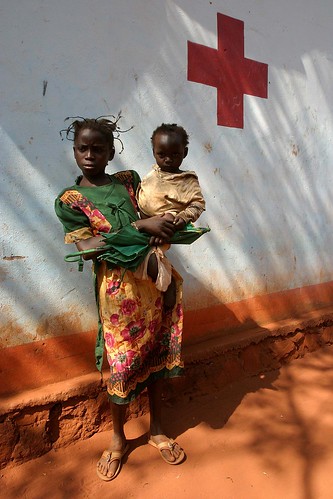
You know what I would love to do? I’d love to start an effort devoted entirely to solving the easy problems in the world. Not a new NGO; you know how I feel about that, but a division within a major existing group. It would be funded by donations, not government grants, and focus on the low-hanging fruit in relief and development. Heck, we could call it Low Hanging Fruit, and live with the inevitable LHF acronym. We wouldn’t worry about sustainability, but we’d have a big focus on local involvement.
There are a million little ideas we all run into, that don’t fit with any expressed donor priorities, but would so obviously make a useful different in the world. LHF would work on those. We’d document everything to pieces, so it would also serve as research on what works. Every community we worked in would have a paired control community with similar demographics, and as soon as we could demonstrate an intervention was working, we’d extend it into the control group so they could benefit too.
Because the focus would be on simple solutions, I think it would be easy (well, easier) to get the kind of individual donations we’d need to keep our programs going. A hippo roller or better irrigation is an easy sell, and easy to illustrate in photographs.
I’m not arguing that these kinds of quick fixes are the answer to the world’s problems; far from it. International development needs long-term approaches to major structural problems. But sometimes a band-aid help your wound heal faster, and it’s frustrating to see someone hurting when a five cent piece of plastic and gauze could make a difference.
Here’s some of what we’d do:
Irrigation: Irrigation water all over the world runs in open ditches. Water is then lost to evaporation and seepage into the ground. LHF would cement and enclose drainage ditches. We’d do it if farmers in the community agreed to provide a certain amount of labor. We would know if it was working by measuring water flows.
Water and Sanitation: We’d support distribution of the hippo roller, and the playpump. We’d know they were working if we saw a decrease in waterborne illness, or a decrease in the average reported time spent on fetching water.
Health: We’d teach parents how to make ORS at home, and work with communities to help them establish emergency transport funds for health emergencies and pregnancy, and nutrition education. We’d support new mobile phone applications to improve access to data for health care providers and remind patients on ARV and DOTS regimes to take their medicine.
ETA: Thinking about this some more, any large NGO could establish an internal “low-hanging fruit” fund. Country directors could submit projects to be supported from that pool of funds, based on opportunities they have seen that no major donor is interested in supporting. The fund pool could come from dedicated LHF fundraising or general unrestricted donor funds.
—————
(photo credit: sebastien.b)





